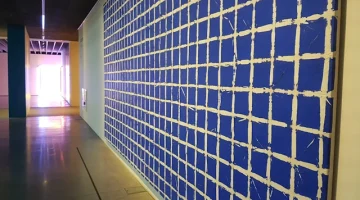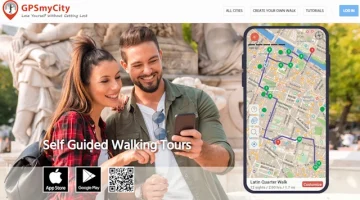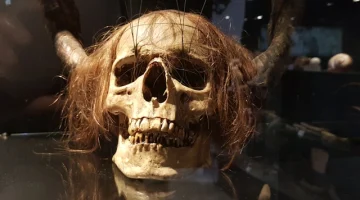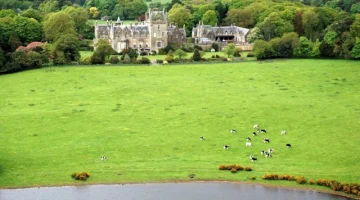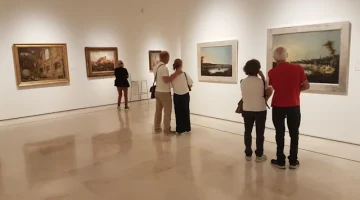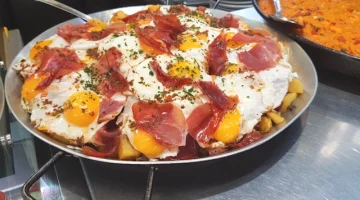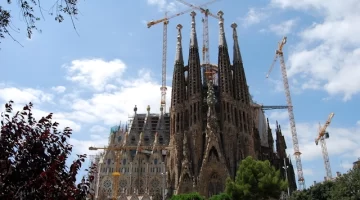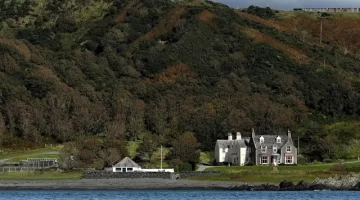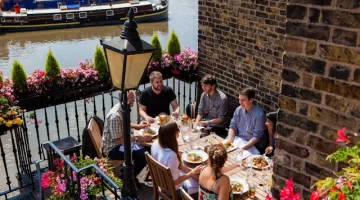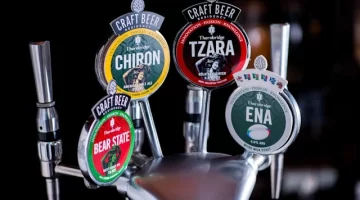Paris by Night… by Bike
The Travel Pages takes a night-time tour of Paris by bike and visits the Place des Vosges, Pompidou Centre, the Louvre, Notre-Dame and other city highlights.
You do begin to wonder, when trying to cross the Place de la Bastille on foot and watching Parisian drivers attempting to mow you down from at least eight points of the compass, whether a trip round Paris by bike at night is the most sensible thing you’ve ever chosen to do in your life.
As if that wasn’t bad enough, I’d opted for the night-time tour. Oh dear. I definitely needed Dutch courage, or whatever they call it in French. So I crept into a crêperie, had a quick crêpe and a flagon of Normandy cider, then a second crêpe for pudding, and crept out again.
In a bike shop hidden away in a lovely old courtyard I met my companions for the night as the man behind the bike rides put a bit of extra air in my back tyre. Deceptive, those crêpes. Michel Noë, a former racing driver, used to lead bike tours on Mallorca, but when he moved to Paris and fell in love with the city he discovered that travelling by bike was the best way of getting to know the place. He must have been right, as the other people booked for the tour included a Parisian man in his fifties who admitted that he didn’t know his own city as well as he should.
‘I am your guide,’ said blonde Christiane, ‘the multi-lingual guide… tonight more than ever.’ The Frenchman spoke no English, two Germans spoke no French, and my rusty ‘O’ level was certainly not up to coping with a fast-talking Parisian guide. Never mind, as even a tri-lingual tour left Christiane with three languages unused: Spanish, Italian and Dutch.
The bikes were new-ish 21-gear tourers, with a pannier strapped on if you wanted one. There were a dozen or so lined up in the shop to choose from, though you’d be welcome to take your own along. The shop was also well-stocked with accessories, new bikes, tourist literature – a useful place to know about. Michel only speaks a little English, but his assistants and guides are all pretty fluent. And in most cases, pretty and fluent. Michel devises the three-hour tours himself, with most of them covering 10-15km, and anyone who can ride a bike can do them. The aim is to stop every ten minutes or so at an interesting spot, while the guide fills you in on history and anecdotes of the type that make you say, ‘Well, I never knew that.’
Did anyone need a quick lesson in using the gears? No, and it didn’t matter much as the cycling was pretty tame stuff. The bikes were all set bang in the middle gear and I scarcely moved out of it all night. We were covering central Paris, all the flat bits it seemed, but some tours like the one to hilly Montmartre might get the pulse rate up a bit. ‘But there are usually more descents than uphill climbs,’ Michel claimed.

After emerging from the shop we crossed one not-very-busy road and were immediately following Christiane like ducklings behind their mother. Her bike had an orange flag on the back, and though at first it made me feel like a Japanese tourist I soon realised how useful it was. You could look around while the sight of the flag in the corner of your eye kept you on course.
We bounced down traffic-free cobbled streets and were soon at our first stop, the Place des Vosges, a large square with a park in the middle, where fountains played in each corner and children played all around as families enjoyed the warm evening.

‘This was the centre of aristocratic life in the 17th century,’ Christiane said in her delightfully-accented English. ‘It means there are a lot of private palaces which were built in those days by the noble people, and this is an example of the private palaces, built between courtyard and garden according to a unique plan because it was used as a shrine to the royal effigy which fortunately we don’t see. After the French Revolution they melted down all the bronze statues to do cannon-bullets, as you might know, as well as the bells.’ It took a while to get used to Christiane’s idiosyncratic English, but you always knew what she meant and it held my attention as I never quite knew what new English words I might learn. Like cannon-bullets.

We bumped our way again down more narrow cobbled back-streets, past pavements packed with diners and drinkers, with Christiane waving to the occasional friend as we whizzed by. ‘You know,’ Christiane told me, ‘I think it is very important to get out on the bikes into Paris, because here we have too many cars. Cars are not friendly, you are shut away inside them and all the time they make people aggressive. You don’t see drivers as other people, only as other cars. On the bikes it is not like that. You can stop to see things, you can wave to people, they can see you smile. It is much better, I think.’
Michel had said earlier: ‘Paris drivers aren’t as aggressive as people imagine. Just be clear with your signals and intentions in traffic and you’ll be fine. The bicycle is the best therapy I know – all the worries in the world disappear on two wheels.’
They certainly do, and it had taken me barely two minutes to see that Paris by bike wasn’t mad, but was a great way to see the city. Especially by night, as the people reclaimed the streets. ‘At this time,’ Christiane said, ‘everyone is eating or drinking or at home watching the TV.’
On the occasions when we did cycle in traffic, the drivers were astonishingly courteous. Can these be the same drivers you see doing a ton heading south for the sun on the motorways? They waved us across junctions and followed patiently behind when the streets were too narrow for overtaking.
We were trundling along another narrow street, noses assaulted by cooking smells, when I realised there was something odd at the end. We appeared to be heading for a huge white wall, which blocked the end of the street completely. Then I understood. It was the back of the Pompidou Centre, the building whose bones are on the outside to leave maximum space inside for galleries and concerts. We stopped at the Place Igor Stravinsky beside it, where more children were playing and couples were lounging on the floor in this traffic-free zone. In the centre is the Firebird Fountain, a spectacularly Gothic rainbow of a water display, with fountains made of swirling snakes, skeletons and the Firebird itself, like a punk ragamuffin topped with Sun King spikes.

‘The fountains are part of the idea that Paris must stay a museum and it’s a good foretaste of what you can see inside,’ explained Christiane. ‘The Pompidou Centre is one of the most visited contemporary museums in the world. It’s not only for sculpture and painting it’s also for music, theatre, cinema and there is also a very important library which stays open until ten o’clock, allowing people who work to continue their studies.’
We continued on through a bustling pedestrian zone to Les Halles, the former market district where Christiane has another anecdote to relate: ‘It’s quite peculiar how history repeats itself because it’s not far from here there used to be the Miracle Courtyards which Victor Hugo tells about in his Misérables. All the homeless people would earn their money begging, they would seem to be blind, deaf, crippled and they would gather in those courtyards to protect each other and they would recover all of a sudden as soon as they came to these courtyards like in a miracle and that is why it was called that. To shelter from the rain they used to build those huts made of boards, and in ancient French board is the same word, borde, and borde gave bordello. The huts have disappeared but the bordellos are still there, I’m afraid. But we are not going there!’

It seems the only red light I was likely to see was the one on the back of the bike in front of me. The sky had darkened now, and as we cycled down to the Seine the magnificent buildings on either side were lit up, while across the river the brilliant white light of a moving ferris wheel did not seem out of place in the least. We looked in on the Louvre and its controversial pyramid, to me a magnificent sight, especially at night with the buildings around it floodlit and few other visitors to be seen.

From here we crossed the Seine, pausing on a bridge to look at Notre-Dame and the Ile de la Cité, where we were heading. While Christiane told the German visitors all about Notre-Dame, I leaned on the parapet and watched the bâteaux mouches drifting by underneath. The night was black now, and their candle-lit tables looked temptingly romantic. Some diners gazed only into each other’s eyes, while others gazed into the eyes of Paris as it passed by on the banks. Further down the bridge a busker was adding the bop-bop sound of bongo drums to the conversational buzz. And behind me I heard the unmistakable sound of a couple exchanging a kiss. And who can blame them, I thought, on a night like this in Paris, the city whose whole existence seems to be designed to bring the lips of lovers together. Then we hopped on our bikes again and cycled behind Notre-Dame for an ice-cream.








